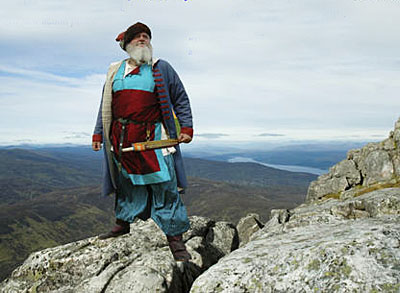
Thanks to Mitch for this image!
Scottish history is finally to be included as a compulsory part
of the Highers – which, for those from foreign parts, is the final year exams
at schools in Scotland, and usually the ones which decided whether or where
you will go to University, should you choose, or even if you will get a job.
About time I am thinking, as Orm might say. We have been talking about this
since at least the 1990s and won’t actually get it until the 2010-11 school
year, which is a little too much history to the subject for my liking. Since
history is my subject – and my job, one way and another – I have seen, up close
and painful, the pitiful state our Scottish kids’ knowledge of their own country’s
past. Robert Bruce and Bannockburn they know, but how we got to that point
and how we got to here are mysteries. You can’t make sense of the present or
find a way to the future without knowing what went before – even if, as it
seems, we are condemned to repeat it.
Nor is it – as detractors are quick to say – parochialism, or
the worst aspect of Nationalism. Just look at Canada, Britain’s biggest colony.
You think that red-white-red flag with the maple leaf came about through meaningful
years of their own history? Only born in 1965, when they had the gumption to
throw away the one with the Union Jack on it. After some 300 years, they are
finally taking control of their history, which is the first step in finding
a sense of self.
Scottish history is now the buzz subject in our universities, while WH
Smiths, Borders and other shops are loupin’ with new books - but I have found
it dismal at school level. Medieval history is for kids up to age 7 or so –
Vikings and knights and castles and stuff – but I have never been invited to
a secondary school class, or any class of teenagers, doing the Dark Ages (or
Early Medieval as I am forced to call it nowadays) or later. As for earlier
– well, you might get a mention of a broch, but not much more than that.
The decision to scrap the current composition of the second Highers paper, in which pupils evaluate source materials on a topic they have studied (most often the Second World War or Ireland, because the material is easy and bountiful) and replace it with a completely Scottish paper, is a welcome and far-sighted solution to the problem by the Scottish Qualifications Authority.
As Professor Tom Devine, of the Sir William Fraser chair of Scottish History at Edinburgh University, writes in the preface to The Scottish Nation: "Scotland is entering a phase of historic cultural change when issues such as identity and culture are being reclaimed and contested both in the media and in public debate".
Little chance of that, with schoolchildren getting taught history for an average of only one hour a week in the first two years of secondary school. Fewer than one-third of them study history beyond S2. Even if they do, history generally is a woeful subject in its present form, designed solely to plan for the exam and not for the knowledge in it. Consequently, you get the Anglo-Saxons, the Tudors, WW2 and the Industrial Revolution – and, even with a compulsory Scottish History Higher there is no guarantee that teachers will pick the best Scottish history has to offer.
It would be nice to think
that kids might actually learn about the Picts as well as the Vikings, the
Highland Clearances and migrations as well as Bruce and what Scots did for
the Empire along with the Act of Union.
But, at the very least, kids might find out that Hitler blitzed Clydebank as
well as London.

Thanks to Mitch for this image!
THE annual Largs Viking Festival has just finished in the usual welter of blood and fireworks – very enjoyable for everyone who took part and the thousands who came to watch. I feel as if I've been in Norse garb for months, since I had Viking education duties with local primary school kids. This was on the days when I wasn’t dressing the set of the authentic village on the seafront, or the authentic camp at Kelburn, home of Lord Glasgow (who thinks we are his personal guard).
All of which gives me a warm glow, because I'm passing on both the lesson of history and message of how to enjoy it. It's strange, though -but not surprising – that the school visit team of myself, Jill, Aeneas and Simon have never taken a class of age higher than about eight. It seems secondary schools don’t teach Dark Age history.
Which could, of course, account for the bizarre decision to throw Govan Old Parish Church, an A-listed building, into an uncertain future (see last month's blog, below). It could also account for the latest, similar, outrage which is one of those acts that leave you with your mouth open and the ground-rippling feeling that you do not share the same planet with some people. It is the current Battle of Tara.
Tara is the Scone of Ireland, the seat of the Irish Kings, a site of huge pre-historic significance. It has survived storm, religious divide, Viking raids and the ravages of time – but not the planners of the 21st century. In just a few years it will be buried under concrete, because the Irish government has decided to drive the M3 motorway through the site.

Tara, and boffin's impression - which do you prefer?
While hard-pressed commuters want the new road, you have to wonder
if they realise the price of it will be their country's most
important archaeological site. You also have to ask why an
alternative route missing out Tara is being ignored.
In
1972 Ireland signed The Convention Concerning the Protection of
World Cultural and Natural Heritage, the primary purpose of which is
to protect heritage of outstanding universal value. You have to argue
that, for the diaspora of Irish, the High Seat of Ireland’s kings
is as important as the Blarney Stone.
But not for the Irish Government. Two years before planning permission was sought and granted, they slipped a law in to allow construction work to go ahead WITHOUT archaeological investigations.
And if one country can circumvent the Convention … watch out for
Dunadd, the seat of ancient Scots kings, turning into a car
park.
They started work destroying Tara with a blanket
on publicity – but diligent protesters eventually forced the
National Roads Authority to bring in archaeologists. In fact the
National Museum of Ireland only sent archaeologists to see damage
after allegations from the Save Tara campaign that part of Rath
Lugh, an Iron Age promontory fort associated with the Hill of Tara,
had been ‘excavated’ by a mechanical digger during preparatory
works for the €660 million motorway project. So far, a series of
ancient underground buildings, dating back 1300 years, have been
dismantled.
But even more importantly, the work has uncovered (and been unable to hide) a circular enclosure the size of three football fields, thought to be a henge structure or a pagan temple. It's peculiar that despite an estimated €30 million of pre-scenning and investigation, the entire four-acre site was missed.
Michael Canney of the Campaign to Save Tara, argues that the removal or alteration of a national monument not previously subject to an environmental impact assessment is illegal under European law. He says: “You can't pretend the potential impacts were adequately assessed - because the monument was not discovered at the time of the assessment.
“All the discoveries along the route indicate the Tara landscape is an integrated complex, and constitutes a national monument in its own right. The Irish Government, like any member state, must respect EU law. What is the point of the EU's existence if states simply cherry-pick directives for their own convenience?”
The EU has now called for all work to stop for a proper investigation. But the government has refused, and plans to defend its previous actions. On the M3 website the government states: “All archaeological sites have been found solely due to National Roads Authority's advance archaeological works. None of these sites had any protection and if small-scale development had been proposed on any of them, it is debatable that any would have been subject to archaeological investigation.”
There are time when I despair. People who don’t give a toss about their own nation’s history are people who don’t give a toss about who comes after them, either.
Balancing this, of course, are all the nice people who take the time and trouble to comment on my books. A whole new audience just entered the auditorium, too, since The Whale Road was published in the US – so a shout to David E Williams from Colorado, who tells me he really enjoyed it. Also to Allan from Oz, who says the same and to Craig, who read it while on holiday in the Highlands and ended up seeing Vikings coming up every loch. Many thanks to everyone else too - keep 'em coming.
Lastly – it seems there is a cover for The Wolf Sea and people keep asking me about it. There certainly is one out on the web, but I can’t tell you if it is the very one or not – because HarperCollins haven’t yet let me see it! From what I see it looks good – longships, warriors etc etc – but I haven’t had a close look myself. But what do you all think? Check out The Wolf Sea mentions on Google and let me know...
AUGUST is a crazy month all round. Apart from lumbering around in ring-mail at shows in Dumfries and Lanark, it's the month when the paperback of The Whale Road is out, the audio is out and the US version is out.
The audio version is abridged – about 190 pages where there used to be 300-plus, but I am assured by the reader that none of the humping or swearing has been removed other than for reasons of pace and spacing.
The reader is David Rintoul, currently appearing in the stage version of Dirty Dancing and soon to be seen with his long-time partner Vivien Heilbron up north at the Lewis Grassic Gibbon centre in Arbuthnott (a village so small the streetlights dim if you switch on your mobile). Ms Heilbron was, of course, star of BBC’s Sunset Song – folk of my age will remember her well.
David called me up to ask about pronunciations and it was only then I realised how many names will tongue-twist other readers. He says it's the longest checklist of pronunciations he's ever made. I told him there were two more books. I hate to hear Doctor Finlay weeping...
Lanark is the show to head for on August 18 and 19, at Lanark Race Course. It will be astounding, with medieval knights and Rus Vikings in all their splendour, not to mention a genuine Robin Hood-style longbow archery contest for the prize of a Silver Arrow. The medievals will be giving it large with William Wallace and the Scottish Wars of Independence, while the Vikings will be concentrating on circa 1050-67, when Lanark was the site of the first Scottish Parliament. I won’t be surprised if both camps manage to find an excuse to come to blows.
I like the paperback cover of The Whale Road and the US cover is so close to the original that I can’t complain. It’s a bit blue, all the same – and smaller, which makes it a thick, compact read; presumably this is what Americans like. Maybe you can get more stacked on shelves or something.
Anyway – get along to Lanark if you can and bring whatever copy you can get, find me and I'll sign it.
Can’t say fairer than that!
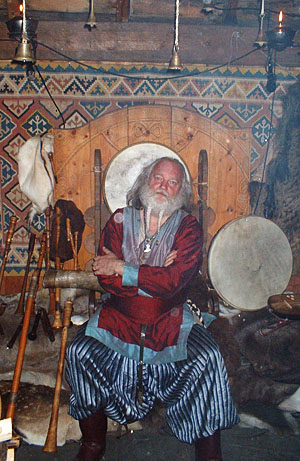
JUST got back from Norway, where I spent two weeks on an island in the Dark Ages – the things I do for research...
The island is Bukkoy in the Karmsund Fjord, not far from Haugesund (a lick and spit away from Stavanger) and reachable only by a small boat (piled high with everything we need, from toilet roll to tents) or a long hike.
You cannot drive on to Bukkoy and can walk across the entire island in 10 minutes. It is mostly trees, with a viking farm and outbuildings – see the little map – and we set up camp in that bit right at the top, just beyond the bits marked Rundhus and Grohpus/Badstu. Sounds better than they are – the Rundhus is a round temple to the Norse gods and the other one is a stable with an authentic old cart in it.
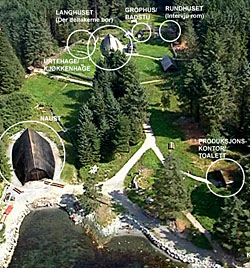 The
idea is that the 20-odd British Vikings – including four Scots –
provide the actual living history expertise. The Norwegians are keen
on their history but don’t seem to have the practical skills to set
up a proper camp. Since they ship school parties and tourists in by
the thousands to watch/film/laugh at us, they want more than just a
slew of traders selling Viking stuff in varying degrees from terrific
to tat.
The
idea is that the 20-odd British Vikings – including four Scots –
provide the actual living history expertise. The Norwegians are keen
on their history but don’t seem to have the practical skills to set
up a proper camp. Since they ship school parties and tourists in by
the thousands to watch/film/laugh at us, they want more than just a
slew of traders selling Viking stuff in varying degrees from terrific
to tat.
We row/sail replica longships in the sund, fight each other (with real metal weapons), live in tents and party in a real longhouse. Better still, we have access to a bread oven, a forge and even an authentic bead-making furnace and can bring these to life for two weeks.
The Naust , or boat house, is a massive wooden building like an upturned Noahs Ark and big enough to take the Osberg dragonship if it sailed in. It is a spectacular cathedral in wood with an almost total lack of modern fixtures.
So we sailed one of three longships, fought, drank, ate and sweltered in a heatwave while the UK drowned and generally lived as an extended family of all ages - so successfully that it was a wrench leaving it.
One of the side trips I managed was to see a stave church, which is a pagoda-like wooden structure built in typical Viking style once they had embraced Christianity. I wasn’t all that keen – stave churches are not my thing – and the one I saw kind of reinforced my so-what about them.
Until I realised that the outside was a shell, built in more sombre Lutheran style circa 1944, to preserve the original 12th century interior from the weather – and what an interior. Blew me away, I have to admit.
I mention this because I come home to find an almost laughable contrast in the plans regarding Govan Old Parish Church. I mean, here are the Norwegians, who have more to bother them in 1944, taking time trouble and effort to preserve a masterpiece while the aberration – sorry, arbitration – committee of the Church of Scotland decide to scrap a historical masterpiece sitting on a 6th century religious site and containing unique relics, including Viking hogback gavestones, from the 9th and 10th.
Now it is dependent on lottery money to provide for a future than will not include becoming a sheep shed (the fate of St Margaret’s Kirk, Orkney) or a casino (the fate of the Robert Adam-designed St George’s Chapel in Edinburgh).
However, it will probably end up like Kelvinside Parish Church, now better known as Oran Mor. At least that way it might get a Sistine Ceiling by Alasdair Gray.
I AM about to take a flying header into edits for Book 2 – and I still haven't managed to come up with a definitive title for it yet, though we are closer than ever before.
I still like original one, The Jarl Torc, but HarperCollins didn’t. Susan Watt is my editor and she said no-one would know what a jarl was, never mind a torc. Outraged, I tried it out on my colleague Sophia McDougall, author of Romanitas (brilliant - get it while stocks last). Now here’s a girl with a heid on her shoulders, who writes brilliant stuff about an alternate Roman Empire.. and the title bemused her; she knew what a torc was because someone had given her one as a bracelet. The ‘jarl’ bit she had to look up.
I'm now forced to conclude that Susan Watt knows more about these matters than I do.
Sophia is already in the throes of copyediting hell for her Book 2, and I can sympathise. I find a good bottle of Laphroaig helps. I know she prefers being dropped on her head to dancing with a historical novelist. Each to their own…
Best of all is going out and hitting someone. That’s when you find that some proof-reading pedant has only read the words and not the sense of what you wrote – or, worse still, when someone decides that American spelling is okay-dokey and you only realize this when you reach the center of the sentence and all the color has been taken out of it.
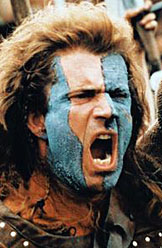 What's
honorable about losing the ‘u’? Why is that everything ending in
ise has to be made ize? Is it to do with the
Canadians? The US bought the book separately from HarperCollins, so
it can’t be for that market.
What's
honorable about losing the ‘u’? Why is that everything ending in
ise has to be made ize? Is it to do with the
Canadians? The US bought the book separately from HarperCollins, so
it can’t be for that market.
Anyway – going out and hitting someone with a big bar of iron works for me, but you have to do it with the Viking re-enactors or you get an ASBO and some funny looks. So, this weekend I'm off to Mugdock, which is near Milngavie in Glasgow. That’s pronounced Mulguy for all those living outside of… well, Milngavie.
We're having a photo-shoot to publicise a show at Pictavia. It sounds like a Brigadoon sort of country, popping up every thousand years or so and full of folk painted blue – but it is, in fact, a sort of historical theme park in Brechin which celebrates the area’s Pictish heritage.
Since we are Dark Age re-enactors, we can do Viking or Pict and a few in between. What’s the difference? Trousers, mainly – Picts don’t wear any. Oh, and the woad thing, which most punters seem to think was worn by Scots freedom fighters in 1314. You know – when we were led to victory by King Mel Gibson the First (left).
If you want to know more, come to Brechin on July 27-28 and watch us hit each other with big dauds of metal.
I should have surfaced like a blowing seal from editing hell by then and Sophia will be out of rehab and the head hospital, so maybe she will come north and relax with the blue people.
And the title of Book 2 – ah, more to follow...
SO, how was the world of 965AD in which Orm and the Oathsworn prowled? Historically hard to find is the short answer – the famous Anglo-Saxon Chronicle says: This year King Edgar took Elfrida for his queen, who was daughter of Alderman Ordgar.
Interesting for Elfrida and her da, but not vital to Orm or the Oathsworn. On the other hand, we know from other sources that there was a Uranus-Neptune conjunction in Libra in 965AD and tofu was first mentioned in China in a document called the Ch'ing I Lu. Again, not a lot of use to Orm.
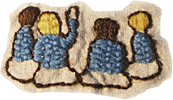 What
IS of use is that Scandinavia wasn’t neatly divided into Norway,
Denmark and Sweden.
What
IS of use is that Scandinavia wasn’t neatly divided into Norway,
Denmark and Sweden.
The Danes controlled the traditional Jutland peninsula, a swatch of the southern tip of what would become Sweden – called Skane – and some parts of what would be Norway. Other parts of Norway were ruled by jarls (roughly translated as earl) and those jarls who thought themselves strong enough to style themselves kings.
Lots of Norse from the lands of Norway, resenting the rise of these self-styled kings, to themselves, lock, stock and all the barrels of ale they could carry, to Iceland, where they swore they would never bow the knee to a king ever again and never have.
In 965AD, Harald Gormsson, known as Bluetooth, was the Danish king and, thus, ruler of that part of Sweden worth having at the time and enough of Norway to have everyone else bowing the knee to him. So much so that he lives on today – the Bluetooth wireless system is named after him and the logo is the runic version of his initials.
Sweden at that time had the Geats in the north and the Svears in the south and no one ruler had yet emerged to stamp authority – the history of Sweden at that time is simply non-existant. Birka, once the pre-eminent trade place in the lands of the Svears, is nominally under the control of whatever king ruled the Svears. In fact, it was independent and controlled by a council of traders. In 965AD, thanks to events elsewhere, it is failing. Dependent on the flow of silver from the east, it is feeling the effects of that flow drying up and efforts to redress the balance involve the Oathsworn.
The silver trade is faltering in part because of Sviatoslav, Prince of Kiev, leader of the Rus, that portion of Russia encompassing from what will be St Petersburg, down through Novgorod to Kiev. Sviatoslav is looking to extend eastwards, particularly in breaking the power of the Khazars, who control a port called Sarkel, vital to the trade routes up from the Black Sea from Constantinople, the New York of 965AD.
The Khazars, a Turkic steppe tribe made good, are fascinating because, in 965AD, they are Jews. Originally pagans, their kings were frequently executed following failures, in battle or just bad harvests, since it was clear they were no longer favoured by the gods. One such king, smarter than the rest, decided a change of religion was needed and, eventually, they decided to be Jews – legend has it so as not to offend their neighbours, the Muslims on one side and the Christians of Byzantium on the other.
By 965AD, the Rus under Sviatoslav are bearing down on Sarkel and the trade routes are disrupted by war.
Other parts of the world which would concern Einar and Orm – south of Harald Bluetooth lay the Saxlanders – Germans to you and me. Under a succession of Ottos they would become the Holy Roman Empire. West of them were the Franks, divided into East and West and beyond them – Valland, now known as Normandy. Ceded in 911AD by a bankrupt French king, with no Danegeld left to give, this was a land of Norse rapidly taking to Frankish ways. In three generations they would produce Duke William, who had a date with destiny at Hastings.
So now you know. Subsequent books in the trilogy will take the Oathsworn – those left alive, that is – up to circa 972AD.
But that’s another story ….